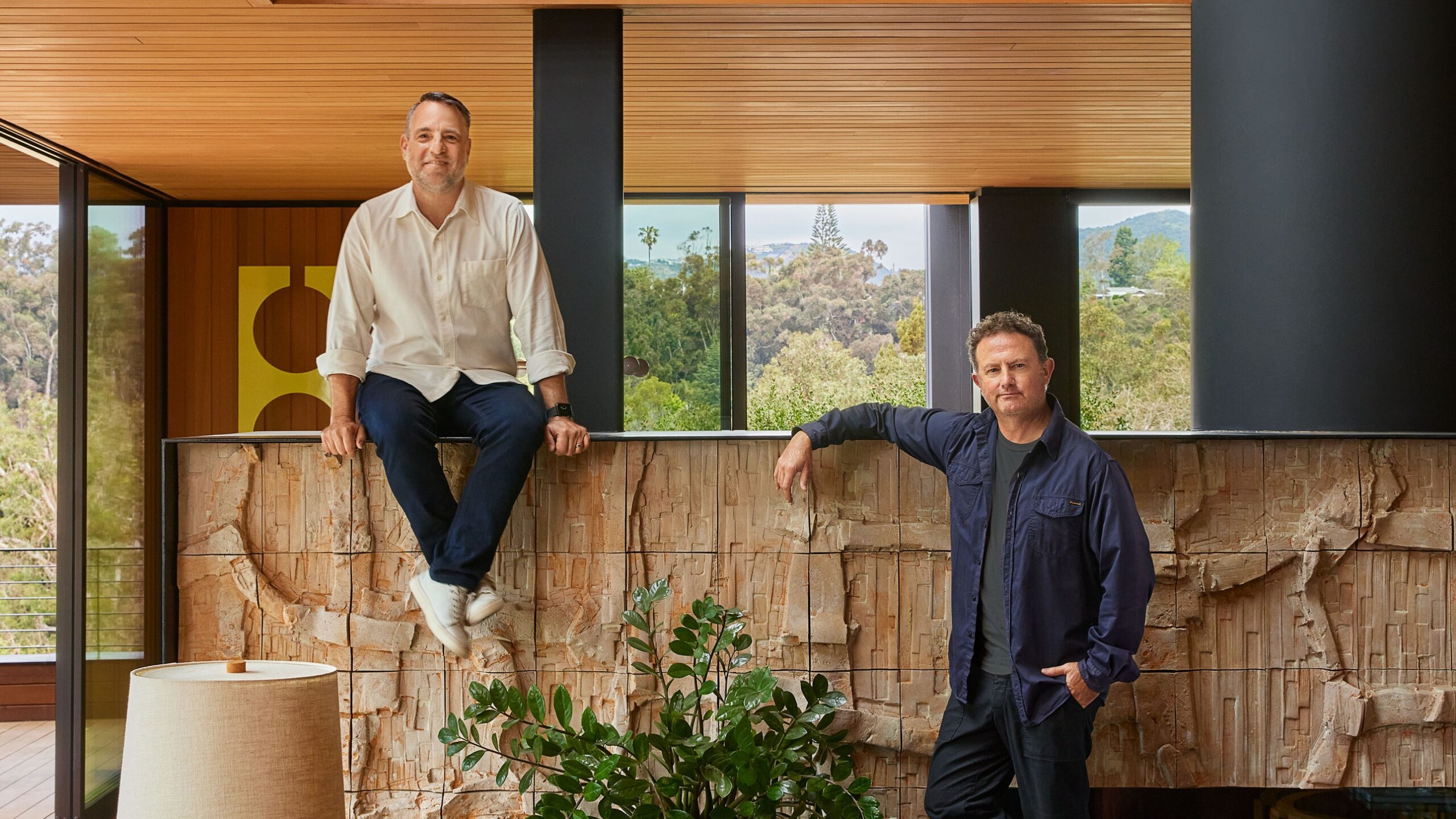Gazing out over a landscape where oaks and sycamores stretch across hilly terrain to the ocean beyond, it’s hard to believe you’re technically still within Los Angeles city limits. “The second you drive into the neighborhood, you just exhale,” explains one inhabitant of this home, nestled on the edge of a canyon between the Pacific Palisades and Santa Monica. Even the climate here feels different—about five degrees cooler than LA with an ocean breeze and thick morning fog.
A couple with three kids had long set their sights on the woodland respite, speckled with organic modern houses by Ray Kappe, Richard Neutra, and Lloyd Wright. The area brimmed with historical lore: During Prohibition, entertainment industry bad boys and wealthy Angelenos snuck away here to blow off steam; over the decades Hollywood luminaries like Billy Wilder, Walt Disney, and Charlie Chaplin fled the limelight to secluded canyon hangouts. Today, the area offers something perhaps even more illustrious: a tight-knit community of neighbors who walk their dogs together and have regular potluck picnics. So when the AD100 interior designer Jamie Bush toured a house back in 2016 with his longtime clients, he saw through the weird 1990s reno and white stucco-and-concrete façade, advising them: “It’s perfect for you. Get it.”
The home had an interesting history, and good bones deep down. Built in 1923, it had been remodeled by Neutra in 1937, an intriguing chapter that was quite literally buried beneath later, taller, renovations. Bush brought on architect David Thompson from Assembledge+ (they’d studied together at Tulane University decades back) to help with the remodel. The three-story structure needed, as Thompson puts it, “to reconnect with the landscape.” Their answer was to clad it, inside and out, with western red cedar, adding doors, windows, and other structural details in blackened steel. Early on, they made a decision to flip the swimming pool from the front to the backyard, establishing a stronger connection to the living spaces and reorienting the canyon view. Landscape architect Chris Sosa and then AD100 firm Terremoto were called in to infuse the already lush grounds with more native species like white sage, tree ferns, and Gray’s sedge. A house that once hovered awkwardly on the canyon’s edge now peeks its head out, subtly, from the landscape, partially consumed by foliage.
“I wanted it to feel like a wooden tree house,” explains Bush, who brought that material palette inside the home, using brick, cork, and ebonized oak on the floors. Having worked with these clients on five other projects, there was a certain ease to the decorating process. Mixing the design traditions of the area with a dash of Japanese and Brazilian modernism, Bush selected furnishings that felt as finely crafted as the home itself. A 10-foot-long white oak dining table was commissioned from North Carolina woodworker Casey Johnson and surrounded by vintage armchairs by Warren Platner. Around the house, a narrative of California craft unfolds, vintage pieces by ceramist Bob Kinzie and sculptor JB Blunk sitting with the work of contemporary talents like Dan John Anderson, Ian Collings, and Dan Pollock.

